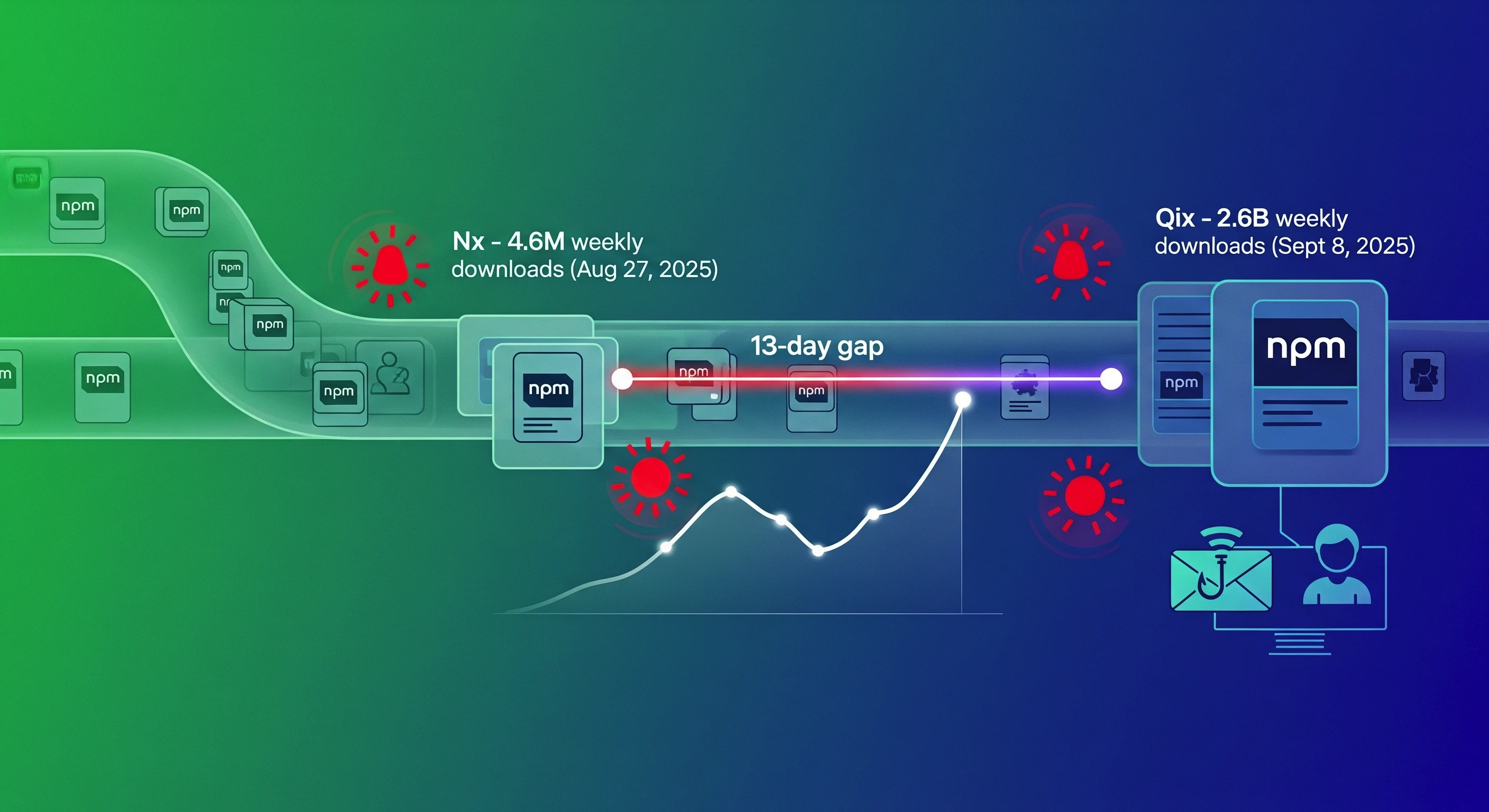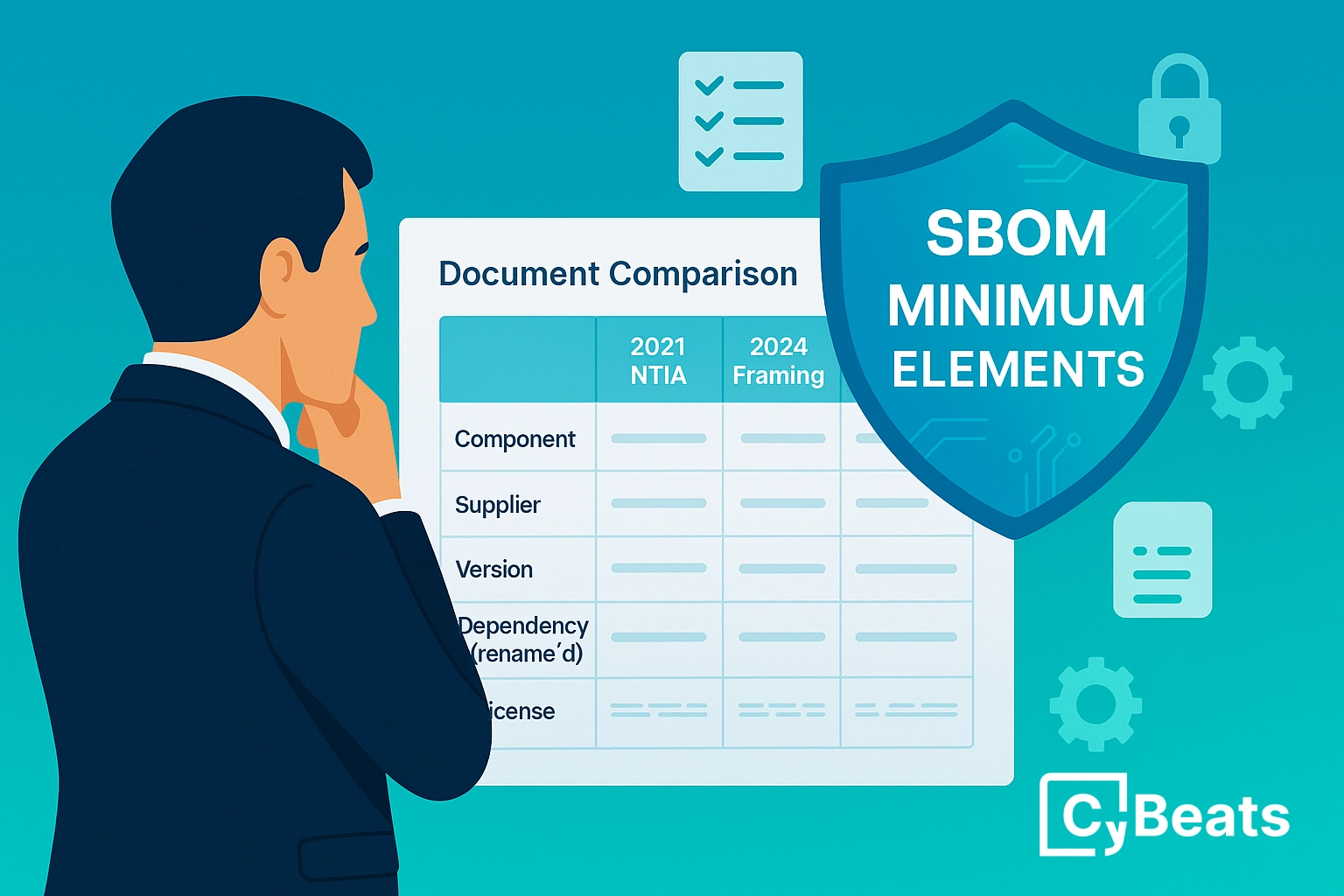What is an SBOM (Software Bill of Materials)?

An SBOM (Software Bill of Materials) is a comprehensive and detailed list of all the software components, libraries, and dependencies used in a software application or product. It includes information such as the version numbers, licenses, and origins of each component. The purpose of an SBOM is to provide transparency and accountability in the software supply chain, enabling organizations to manage potential security and legal risks.
Why Do Organizations Need a Software Bill of Materials for Security?
Here is how an SBOM can help improve security:
- Identifying potential vulnerabilities: A software bill of materials (SBOM) lists all the components and dependencies used in a software application. This information allows organizations to quickly identify any known security vulnerabilities in the software, and take the necessary steps to fix them. For example, if a component has a known vulnerability, the organization can either upgrade to a newer version of the component or replace it with a different component.
- Enhancing threat detection: By having a complete and up-to-date SBOM, organizations can compare their software components against threat intelligence databases to identify potential security threats. This helps organizations to be proactive in protecting their systems and data from malicious actors.
- Ensuring compliance: SBOMs provide a comprehensive and transparent view of the software components used in an application. This information can be used to ensure that the software complies with industry regulations and standards, such as data privacy laws, government regulations, and procurement policies.
- Improving software development processes: Regularly reviewing and updating the SBOM can help organizations to improve their software development processes and reduce the risk of security incidents. For example, if a component has a known vulnerability, the organization can replace it with a different component during the development process, rather than waiting for a security breach to occur.
- Fostering collaboration: SBOMs can be shared with other organizations, suppliers, and stakeholders, fostering collaboration and trust in the software supply chain. This helps to improve the security and quality of software products and services, and to mitigate the risk of security incidents.
What’s in an SBOM?
The National Telecommunications and Information Administration (NTIA) has outlined the minimum requirements for a software bill of materials (SBOM) as follows:
- Author Name: The author of the component, usually the organization supplying the software.
- Supplier Name: The name of the software supplier, typically including aliases. The supplier and author might be different if the supplier is making a claim on behalf of the author.
- Component Name: The name of the software component.
- Version String: The format of the version information.
- Component Hash: A cryptographic hash that acts as a unique identifier, defined by industry formats.
- Unique Identifier: A unique identifier for each component.
- Relationships: The relationship between the component and the software package, often defined as "includes".
The NTIA's guidelines are meant to provide a baseline and can be used as a starting point for organizations to develop their own SBOMs. However, the actual content and level of detail of an SBOM may vary depending on the specific needs and requirements of the organization.
Software supply chain security platforms can also include the following vulnerability information with each software component:
- Identification of the vulnerability (e.g. CVE identifier).
- Description of the vulnerability and its impact.
- Severity rating (e.g. critical, high, medium, low).
- Information on known exploits or attack vectors.
- Available patches or upgrades.
- Details on remediation or mitigation strategies.
- Historical data on the vulnerability (e.g. date discovered, date patched).
This information can help organizations understand the potential security risks associated with each component, and to take the necessary steps to mitigate those risks, such as applying patches or upgrading to a more secure version of the component.
SBOM Format Standards
SBOM format standards define the structure and format of an SBOM, enabling interoperability and consistency between different organizations, software products, and supply chains. Here are some of the most widely adopted SBOM format standards:
SPDX: Software Package Data Exchange
SPDX (Software Package Data Exchange) is an open-source standard for exchanging information about software packages and components. It provides a detailed format for SBOMs and includes information about software licenses, component hashes, and vulnerabilities. The standard was developed by the Linux Foundation and is now maintained by the SPDX Workgroup.
SPDX is designed to provide a common, machine-readable format for software package data, enabling organizations to share and exchange information about software components and their associated licenses, copyrights, and security vulnerabilities. The standard covers a wide range of software types, including libraries, executables, and firmware.
An SPDX SBOM includes information such as:
- Package name and version.
- License information, including the license identifier and a copy of the license text.
- Component hashes for authenticity and version control.
- A list of dependencies and their associated licenses.
- Vulnerability information, such as CVE identifiers and severity ratings.
The SPDX standard is widely adopted and supported by a growing number of organizations, including major software vendors, open-source projects, and governments. SPDX helps organizations to manage software security risks, ensure compliance with open-source licenses, and streamline supply chain management processes.
Learn more in our detailed guide to SBOM standards (coming soon)
SWID: Software Identification Tagging
SWID (SoftWare IDentification) is a standard for software identification, including information about the software publisher, product name, version, and other attributes. It is used to provide a unique identifier for software components and to enable better software inventory management.
A SWID tag is a small XML file that is embedded in the software package or installed with the software. It contains information such as:
- Publisher: The name of the software publisher.
- Product name: The name of the software product.
- Version: The version number of the software.
- Package ID: A unique identifier for the software package.
- Install location: The location where the software is installed.
- Tag creation date: The date when the SWID tag was created.
By including SWID tags with software components, organizations can improve their software inventory management, enabling them to track the use of software across their networks and keep an up-to-date record of installed software. This information can be used to support software license management, cybersecurity threat management, and software asset management.
CycloneDX
CycloneDX is a lightweight, compact format for exchanging information about software components and their associated security information. The standard is designed to be easy to use, read, and generate and is optimized for use in software development, supply chain management, and security applications. It provides the following information:
- Material Flow Chart Metadata: This includes information on the software application/product itself, such as the supplier, manufacturer, components and tools.
- Components: This includes information about the application, framework, operating system, file, device, library, and more.
- Services: This section lists external APIs that the software can use, such as endpoint URIs, authentication requirements, and trust boundary traversals.
- Dependencies: This section lists both direct and indirect connections between components, including dependencies on libraries, frameworks, and other software components. This information is useful for identifying the relationships between components and understanding the impact of updates or changes to components.
It also includes information about known vulnerabilities. CycloneDX is defined in various ways, including JSON, XML, and Protocol Buffers. It is prescriptive and designed for diverse use cases such as SBOM, OBOM, SaaSBOM, MBOM, and VEX. Additionally, CycloneDX is extensible to support future or more specialized use cases.
What Are the Challenges of Adopting SBOMs?
Adopting Software Bill of Materials (SBOMs) can help organizations improve their software security and supply chain management processes, but it can also present some challenges, including:
- Data Accuracy: The accuracy of the data contained in an SBOM is critical to its effectiveness. However, it can be challenging to ensure that the information is complete, up-to-date, and accurate.
- Complexity: Managing a large number of components and dependencies can be complex, and it can be difficult to keep track of all the information in an SBOM.
- Integration with existing tools: Integrating the SBOM with existing tools and processes can be a challenge, and organizations may need to invest in new tools or modify existing ones to support the SBOM.
- Standardization: There are multiple SBOM formats available, and it can be challenging to determine which format is best for an organization and how to standardize across different teams and systems.
- Resistance to change: Some organizations may resist adopting SBOMs due to the change it represents and the need for additional resources to implement and maintain it.
- Cost: Implementing an SBOM can be expensive, and organizations may need to invest in new tools and processes, as well as training and support for their teams.
- Technical skills: The creation and maintenance of an SBOM requires technical skills, and organizations may need to invest in training or hiring additional staff to support this effort.
By understanding these challenges and developing a comprehensive plan to address them, organizations can overcome them and effectively adopt SBOMs to improve their software security and supply chain management processes.
How to Choose SBOM Tools
When choosing SBOM tools, it is important to consider the following factors:
- Integration with existing tools: The SBOM tool should integrate well with the organization's existing software development and security tools, such as issue trackers, vulnerability scanners, and supply chain management systems.
- Support for multiple formats: The tool should support multiple SBOM formats, such as CycloneDX, SPDX, and others, to ensure compatibility with different systems and platforms.
- Scalability: The tool should be able to handle a large number of components and dependencies and be scalable to support the organization's growth.
- Ease of use: The tool should have a user-friendly interface that is easy to understand and use, even for non-technical users.
- Accuracy: The tool should have a high degree of accuracy in detecting and reporting information about components and dependencies, including version numbers, licenses, and other relevant metadata.
- Automation: The tool should have the ability to automate the process of generating and updating the SBOM, reducing manual effort and increasing accuracy.
- Security: The tool should have robust security measures in place to protect sensitive information about the components and dependencies used in an application.
- Cost: The tool should be cost-effective, with pricing that fits within the organization's budget.
- Technical support: The tool should come with reliable technical support, including documentation, forums, and a knowledgeable support team.
By considering these factors, organizations can choose the right SBOM tool to meet their needs and improve their software security and supply chain management processes.
Best Practices for Generating SBOM
Here are a few best practices for generating a Software Bill of Materials (SBOM):
- Automate the process: Use tools and technologies that can automatically generate an SBOM from the source code, package manager, or build system.
- Use standard format: Use a standard format, such as SPDX, for SBOMs to make them easily readable and shareable across different systems and teams.
- Keep it up-to-date: Regularly update the SBOM as new software components are added or updated, and ensure that the SBOM is always accurate and up-to-date.
- Track vulnerabilities: Use a vulnerability management tool that can automatically scan the SBOM and identify any known vulnerabilities in the software components.
- Track license compliance: Use a license compliance tool that can scan the SBOM and identify any potential license compliance issues with the software components.
- Use a version control system: Use a version control system (VCS) to track and manage the different versions of the SBOM, and to make it easy for different teams and stakeholders to access and review the SBOM.
- Make it accessible: Make the SBOM easily accessible to all stakeholders, including development teams, security teams, and management, and ensure that everyone understands the importance of the SBOM and how to use it.
Learn more in our detailed guide to SBOM generators
SBOM Studio: Managing the Lifecycle of your SBOMs
Cybeats' SBOM Studio is designed to manage and distribute software bill of materials (SBOMs) across the enterprise in a single platform. It provides organizations with a centralized view of cybersecurity vulnerabilities, enabling them to improve the visibility and security of their software supply chain.
SBOM Studio can work with any SBOM generation tool, and can validate and correct imported SBOMs, improving their accuracy. In addition, it simplifies the implementation process, speeds up the fixing of vulnerabilities, and automates SBOM management, ultimately improving the return on investment of SBOM adoption in an organization.

After generating SBOMs using any SBOM generation tool, users can gain valuable insights into their software supply chain:
- Automated SBOM management: Validates SBOMs to ensure correct formatting, auto-correct them, or reject with meaningful errors. It also enriches SBOMs, populating them with key information from software supply chain intelligence.
- Accelerated vulnerability management: Continuously monitors SBOMs, scans for new vulnerabilities, categorizes and filters vulnerabilities by priority. Enables searching for and identify specific SBOMs and compromised components across the organization.
- Improved workflow for security operations: Prompts cyber teams with recommended actions to fix vulnerabilities and reduce cyber risk. Leverages a data lake architecture to analyze vulnerabilities at scale. Provides an intuitive user interface and workflow.
- SBOM sharing and exchange: Enables securely sharing SBOMs with regulatory agencies, internal, external customers, while keeping IP protected. Supports all SBOM languages and easily converts between them.
- Data-driven business decisions: Generates reports and provides visually appealing dashboards for use by leadership, to share knowledge and support budgeting, forecasting, and risk-mitigation decisions. Provides a a Governor View vantage with enhanced visibility into all the layers and subsidiaries of the core business.
- Regulatory compliance: Satisfies Governance, Risk and Compliance (GRC) requirements, showing best practices and good cyber hygiene by having an SBOM for all of your own software, and any third-party products used by your enterprise.
- Protects against license infringement: Provides license infringement notifications when software that is used without permissions or licenses that can have associated legal risk and cost.
.png)
.svg)
See Cybeats Security Platform in Action Today
We shortened our vulnerability review timeframe from a day to under an hour. It is our go-to tool and we now know where to focus our limited security resources next.
.svg)

SBOM Studio saves us approximately 500 hours per project on vulnerability analysis and prioritization for open-source projects.
.svg)


.svg)
.svg)













